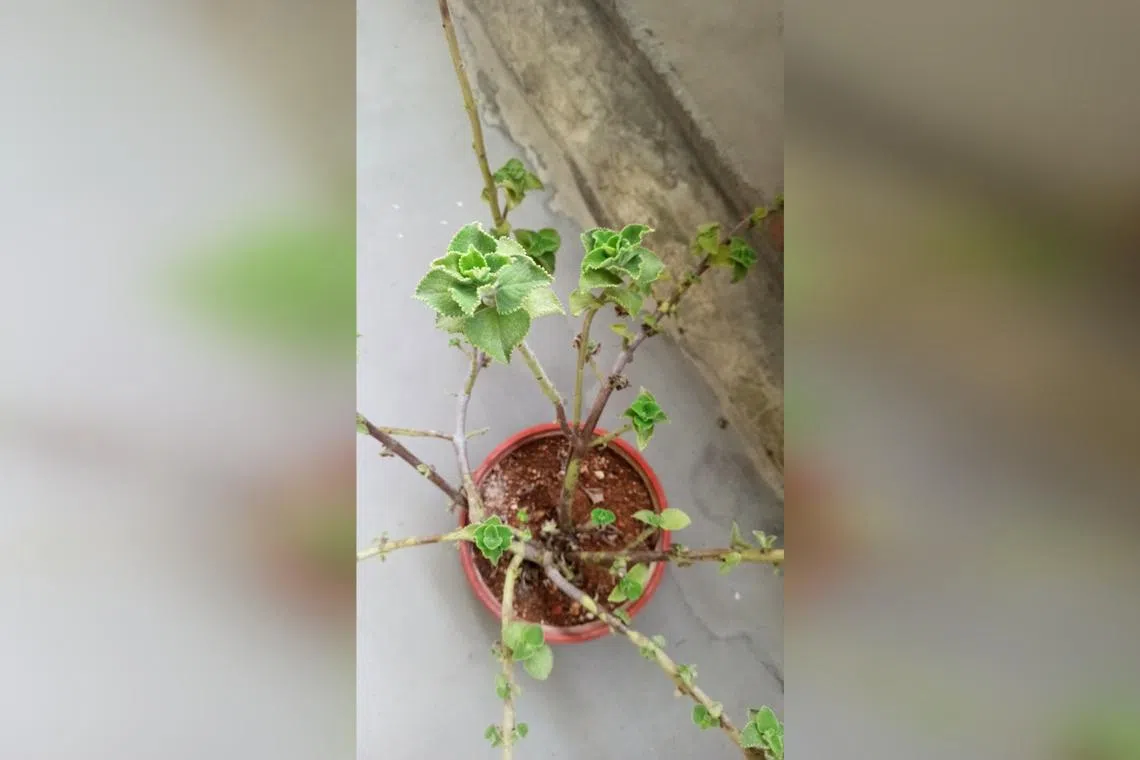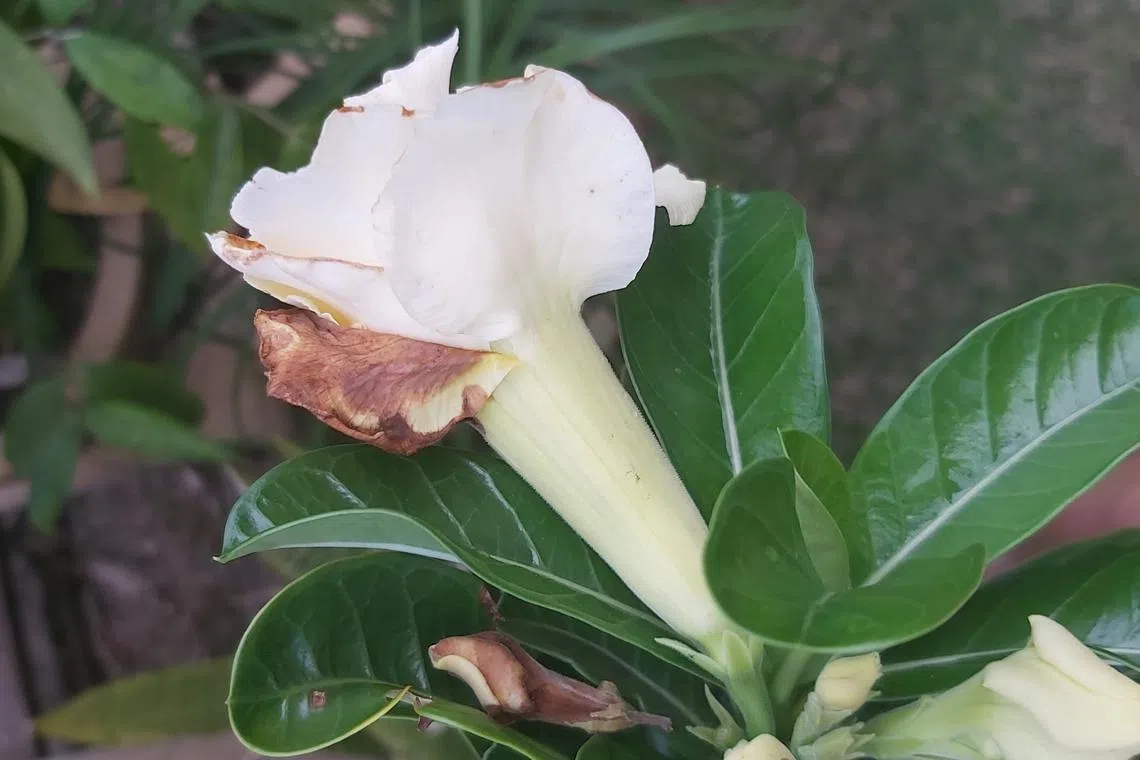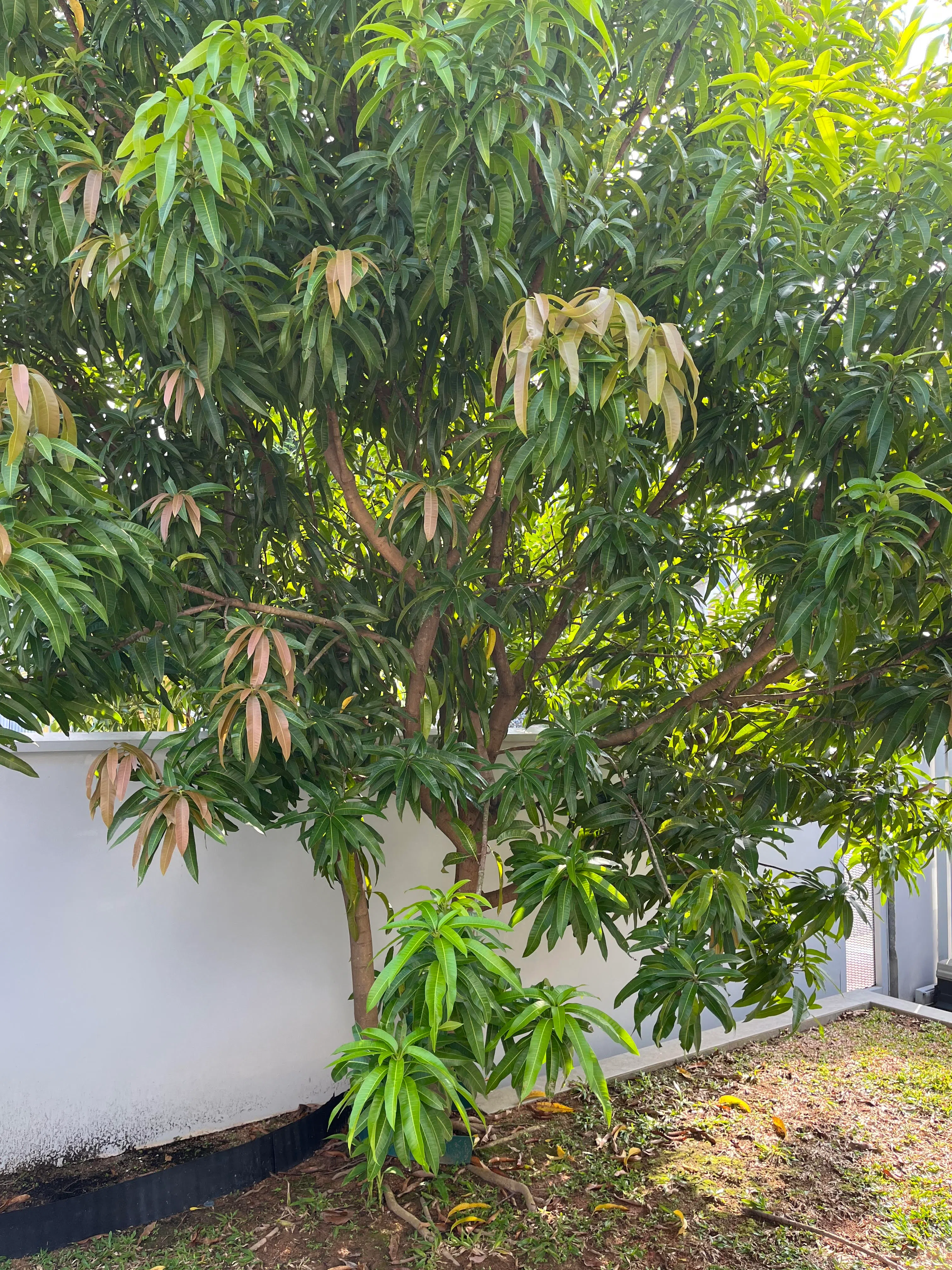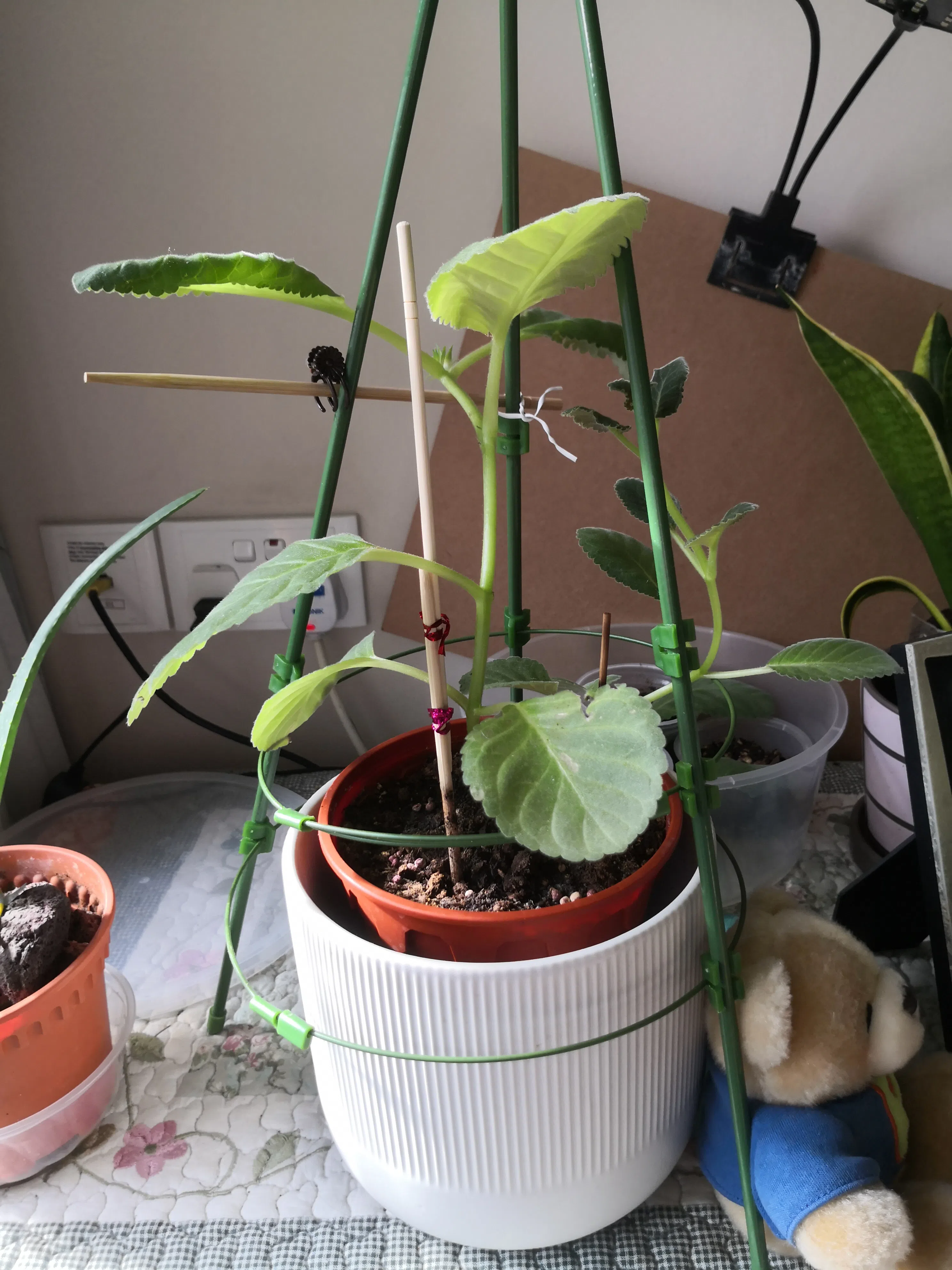Root Awakening: Indian Borage looks leggy
Sign up now: Get ST's newsletters delivered to your inbox

The Indian Borage thrives in a well-drained growing mix where stems do not rot.
PHOTO: SINDY ANG
Wilson Wong
Follow topic:
Too much shade and moisture may lead to fungal disease
I repotted my Indian Borage plant more than a month ago. Three weeks ago, brown patches appeared on some leaves. A few leaves dropped as well. I water it on alternate days. What is wrong?
Sindy Ang
Your plant looks leggy. You might want to take its tip cuttings to start new plants and try to root them.
The Indian Borage thrives in a well-drained growing mix where stems do not rot. Plants require good air circulation and at least six hours of direct sunlight in a high-rise setting.
As for the leaves with spots, is your plant being grown in the shade? Although this species can tolerate a semi-shaded spot, too shady a location, coupled with a high-moisture environment, can lead to fungal disease on the leaves.
Protect your plant from the rain as disease-causing pathogens can enter plant tissue in that way. Remove diseased leaves to prevent further spread.
Queen of the Night needs more light and protection from pests

The Queen of the Night flower is best grown in a semi-shaded location and needs at least six hours of filtered sunlight a day.
PHOTO: TOMMY KANG
I bought my Queen of the Night flower from a nursery a few months ago and it seems to have worsened since. It is being grown in the shade of a bigger plant to avoid direct sunlight. What should I do?
Tommy Kang
The long, floppy leaves of your plant indicate that it is not getting enough sunlight. This plant is best grown in a semi-shaded location and needs at least six hours of filtered sunlight a day.
The grey patches may be caused by snails or slugs feeding on it. Check for their presence at night, especially during wet weather, when they are more active. Remove the pests and clear out potential hiding spaces to reduce their population.
Desert Rose damaged by rain or thrips

Place flowering plants under a clear shelter to protect them from rain and reduce the likelihood of damage and disease.
PHOTO: BOB LEONG
My Desert Rose turned black at the edges and the problem spread to the whole flower till it dried up. I have tried neem oil and malathion to no effect. How can I save my plant?
Bob Leong
The Desert Rose can be infected with disease if it has been hit by heavy rain. You may want to place flowering plants under a clear shelter to protect them from rain and reduce the likelihood of damage and disease.
Also, your flower may have been infested by thrips, which is a type of insect that feeds on plant tissues, including developing flower buds. Damaged portions appear as unsightly brown areas.
Thrips are difficult to control. Try using spinosad or entomopathogenic fungi-based pesticides containing Beauveria bassiana and Metarhizium anisopliae. Spinosad must not be used too frequently, lest the pests develop a resistance.
Some seed-grown fruit trees do not breed true

Planting the mango tree so near to your boundary wall may result in its roots damaging the structure.
PHOTO: WONG SOONG KUAN
Four years ago, I planted this Australian mango tree from a seed of the Honey Gold variety. The tree is healthy and produces foliage but no fruit. What is wrong?
Wong Soong Kuan
Trees grown from the seeds of fruit of specific cultivars do not breed true. This means that the resulting plant may not bear the same characteristics as the original cultivar. Such trees need to grow very large before they will fruit and many do not fruit at all.
The mango tree can grow quite large and planting it so near to your boundary wall may result in its roots damaging the structure. Leaves may fall into your neighbour’s residence and cast shadows in his or her garden as well.
Ensure that you are able to access all parts of your tree for maintenance and pruning.
Try grafted fruit trees – these grow in a smaller and more manageable size, and bear fruit more reliably.
Florist’s Gloxinia needs more light to thrive

The stretched look of this plant is an indication that it is not getting enough sunlight.
PHOTO: RON TAN
I have tried to propagate this plant’s leaf cuttings without success. Why is it so leggy?
Ron Tan
Your plant is commonly known as the Florist’s Gloxinia. Its botanical name is Sinningia speciosa.
The stretched look of your plant is an indication that it is not getting enough sunlight. It grows best in a location which gets at least six hours of filtered sunlight a day. Also, plant growth regulators may have been used in commercial production, which promote a more compact growth habit that is not easily replicated by home gardeners.
The plant may be propagated from stem cuttings. The tip of the stem should have several nodes that can be rooted either in water or a soil-less growing mix.
This plant does not tolerate wet feet, as it can cause the underground storage organ and the crown of the plant to rot. Let it dry out slightly between watering, and pot it in a porous and aerated growing mix.
Answers by Dr Wilson Wong, an NParks-certified practising horticulturist, parks manager and ISA-certified arborist. He is the founder of Green Culture Singapore and an adjunct assistant professor (Food Science & Technology) at the National University of Singapore.
Have a gardening query? E-mail it with clear, high-resolution pictures of at least 1MB, if any, and your full name to . We reserve the right to edit and reject questions.

